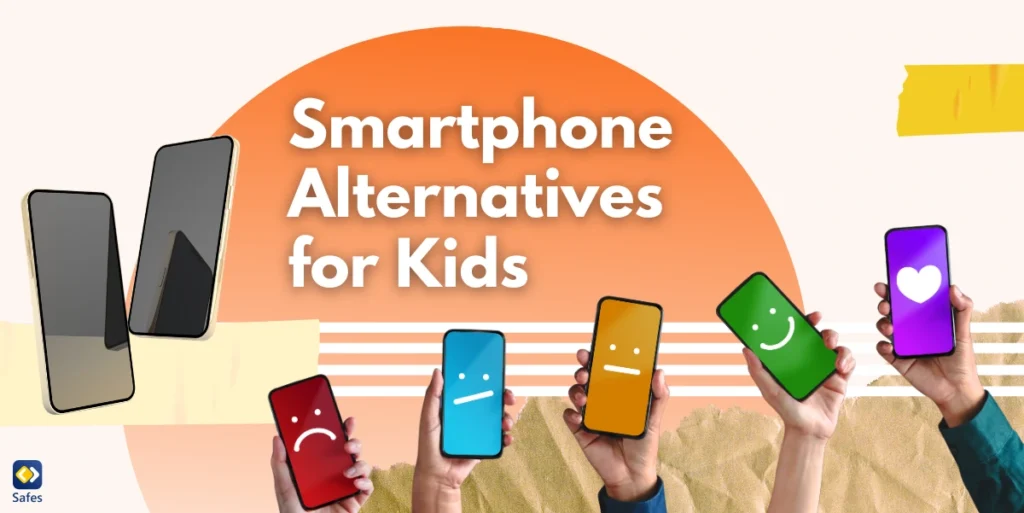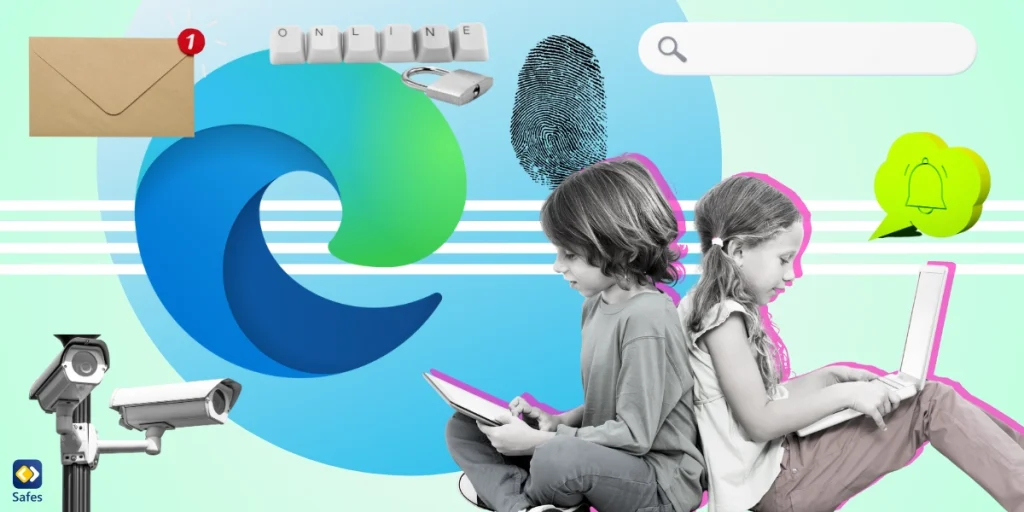In the world of finance, it’s never too early to start learning. Whether it’s understanding the value of money, the significance of savings, or the concept of budgeting, instilling these concepts in your child from a young age can set them on the path to a secure financial future. In this article, we will delve into youth banking products, providing parents with a thorough guide to navigate this essential aspect of their child’s financial education.
Download and Start Your Free Trial of the Safes Parental Control App
Understanding Youth Banking Products
Youth banking products are financial tools specifically designed for children and teenagers. These products, which can range from savings accounts to prepaid debit cards for teens, aim to educate young individuals about money management in a practical and engaging way.
For parents, youth banking products offer a safe and controlled environment to introduce their children to banking, helping them understand how to manage their money responsibly. These products also encourage good financial habits, such as regular saving, responsible spending, and financial goal setting.
- Related Article: 7 Must-Read Books About Saving Money for Kids and Teens
The Age Factor: How Old Do You Have to Be to Get a Debit Card?
Parents often ask, “How old can you be to get a debit card?” The answer varies depending on the type of account and the specific bank or credit union. Typically, the legal age to open a bank account independently is 18. However, with a parent or guardian’s assistance, children as young as six can get a debit card linked to a joint or teen checking account.

10 Best Youth Banking Products
Here are 10 best banking products for kids and teens. These products can help your child learn about money management, budgeting, saving, and investing from an early age. Using these products, they can develop smart financial habits that serve them well. In all cases, parental involvement is crucial.
Kid’s Savings Account
These savings accounts are designed specifically for children, allowing them to deposit their pocket money and earn interest. It encourages saving habits from an early age. Banks like Wells Fargo offer such accounts with features like:
- Online access
- Automatic transfers
- Account alerts
Teen Checking Accounts
These are much like regular checking accounts but with parental controls. Banks like Capital One offer these accounts with features like direct deposit, mobile check deposit, and zero monthly fees. It helps teenagers understand how to manage their money.
Prepaid Debit Cards
Prepaid debit cards for kids, like the GoHenry card, allow children to make purchases with their own money. Parents can monitor spending, set spending limits, and even block certain types of purchases, teaching children to spend wisely.
Student Credit Cards
These are credit cards with lower credit limits and often rewards for good grades. They are an excellent way for teenagers to build credit history while learning about credit card usage.
Education Savings Accounts (ESA)
ESA accounts allow parents and children to invest in a tax-advantaged account for future education expenses. The interest earned is tax-free if used for qualified education expenses.
Youth Investment Accounts
Youth investment accounts allow children and teens to invest in:
- Stocks
- Bonds
- Mutual funds
They come with parental oversight features and are a great way to introduce children to investing.
Roth IRA for Minors
Teenagers can contribute to a Roth IRA if they have earned income. It’s an excellent way to save for the future and learn about retirement planning.
Mobile Banking Apps for Kids
Many banks offer mobile banking apps designed specifically for children, like the . These apps allow children to check their balance, set savings goals, and learn about budgeting.
Custodial Accounts
These accounts, like UGMA and UTMA, allow parents to save and invest on behalf of their children. The child takes control of the account when they reach the age of majority.
Insurance Policies for Kids
Some insurance companies offer policies for children that can be converted into a regular policy when the child becomes an adult. It’s an excellent way to provide financial protection for the future.
Choosing the Right Youth Banking Products
When it comes to choosing the right youth banking products, there are several factors parents need to consider:
Age suitability: Ensure the product is age-appropriate. A simple savings account might be suitable for younger children, while a checking account or prepaid debit card for teens might be more appropriate as they grow older.
Fees: Be aware of any fees associated with the account, such as monthly maintenance fees or ATM withdrawal charges.
Access: Consider how your child will access and manage their account. An account with online and mobile banking features can be a practical choice.
Parental controls: Look for products that offer robust parental control features, allowing you to monitor and guide your child’s financial behavior.
Educational resources: Opt for products that include educational resources to help your child learn about money management.
Benefits of Youth Accounts
Youth accounts come with several benefits designed to aid in financial literacy for children. These include:
Structured Learning
Youth banking products often come with features that promote structured learning. For instance, the account may be linked to an app or online platform with interactive quizzes, videos, and other educational resources. These tools can make learning about financial concepts fun and engaging, fostering a deeper understanding of money management.
Real-World Experience
Having a debit card gives children real-world experience in managing money. They can make purchases, track spending, and even learn about online safety and privacy. This hands-on approach can be more effective than theoretical learning alone.
Parental Control
Most youth accounts come with parental control features. Parents can monitor their child’s spending habits, set limits, block certain types of transactions, and even freeze the debit card if required. This ensures that while children have some autonomy, parents still have oversight to guide their financial decisions.
Building Good Financial Habits
Youth accounts encourage good financial habits from a young age. Regular savings, responsible spending, and understanding the concept of interest are just a few of the habits that these accounts promote.
The Role of Technology in Youth Banking Products
In the digital age, technology plays a crucial role in youth banking products. Many banks and financial institutions offer mobile apps that allow children to manage their money on the go. These apps often include features like goal setting, savings trackers, and even games that make learning about money fun.
Moreover, technology can also provide an added layer of security. For instance, the Safes parental control app can protect children against cybercrimes like identity theft and phishing. Teach your child about online safety and privacy to ensure they are well-equipped to navigate the digital world.
Use the following resources to learn about how to protect your child on different platforms:
- Windows parental controls
- Macbook parental controls
- Android parental controls
- iPhone parental controls
Sign up for a free trial with Safes to access tools and guides for financial education.
Conclusion: From Children’s Money Bank to Saving Accounts
Youth banking products offer a comprehensive way to introduce children to the world of finance. By choosing the right products for your child and guiding them through their financial journey, you can lay a strong foundation for their financial future.
Financial literacy isn’t just about understanding money; it’s also about:
- Making informed decisions
- Setting financial goals
- Adopting good money habits
So, start early and help your child build a solid economic basis for their future.
Your Child’s Online Safety Starts Here
Every parent today needs a solution to manage screen time and keep their child safe online.
Without the right tools, digital risks and excessive screen time can impact children's well-being. Safes helps parents set healthy boundaries, monitor activity, and protect kids from online dangers—all with an easy-to-use app.
Take control of your child’s digital world. Learn more about Safes or download the app to start your free trial today!




